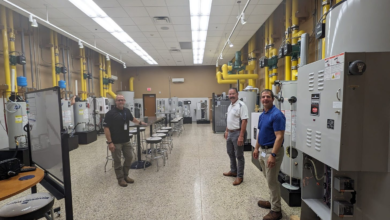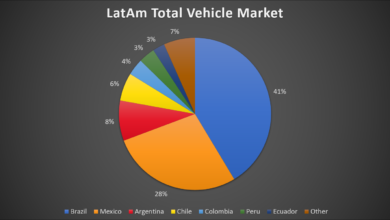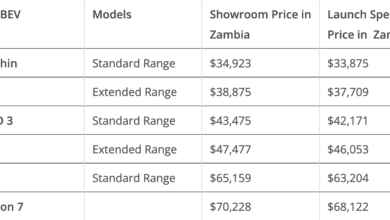Clean Energy Has A Secret Weapon Up Its Sleeve

Sign up for daily news updates from CleanTechnica on email. Or follow us on Google News!
File this one under W for Win Some, Lose Everything. Fossil energy stakeholders and their allies are on a tear against new wind and solar projects in rural communities, with some success stories to tell. However, the prevailing wind is blowing in favor of clean energy, and the nation’s powerful rural electric cooperatives are here to help.
Rural Electric Cooperatives & Clean Energy
In one of the great ironies of American political life, many conservative rural communities in the continental US get their electricity from ratepayer-owned, not-for-profit utilities called rural electric cooperatives, aka socialism.
The co-ops were established by federal charter as a Depression-era economic development plan to electrify impoverished rural areas that were left in the dark by for-profit utilities. They continue to serve a large percentage of high-poverty counties to this day, along with urban and suburban ratepayers, too.
The public benefit mission of co-ops has left some entangled in fossil energy contracts and employment obligations, but the same community-focused business model also supports the adoption of new clean energy technologies that create new jobs, increase tax revenue, and provide other community benefits (see more electric cooperative background here).
Willy & Wally Spark A Clean Energy Makeover
To get a handle on the power of rural electric cooperatives to drive the clean energy revolution, consider the case of Basin Electric Power Cooperative, a North Dakota-based feeder utility for more than 100 member co-ops spread out over a mixed bag of red, blue, and purple states including Colorado, Iowa, Minnesota, Montana, Nebraska, New Mexico, South Dakota, and Wyoming, as well as North Dakota.
Back in 2001, while the rest of the nation was still sleeping on the renewable energy job, Basin was already pursuing clean energy in the form two wind turbines for one of its member co-ops in South Dakota.
The two turbines, nicknamed Willy and Wally, only had a total capacity of 1.3 megawatts between them. However, they set the stage for hundreds more.
“Over their lives, they produced nearly 135 million kilowatt-hours of electricity and provided key experience and training for technicians supporting Basin Electric’s renewable energy operation,” recounts the trade organization National Rural Electric Cooperative Association.
Those turbines were decommissioned in 2022 at the end of their useful lives, but by then Basin’s clean energy journey was already well underway. In 2009, the co-op began building the $240 million, 115.5 megawatt Prairie Winds 1 wind farm in North Dakota.
The largest wind project in the US at the time, Prairie Wind’s 77 GE turbines began spinning out clean energy to the grid in just four months’ time, at the end of 2009.
“By the end of 2010 the cooperative hopes that it will produce 20% of its electricity from wind power for its 2.8 million rural consumers,” CleanTechnica noted back in 2010.
And how. To date, Basin has added 1,800 megawatts of wind to its portfolio, including a 172-megawatt project in South Dakota.
Make That Even More Clean Energy
With that history behind Basin, it’s no surprise to see the co-op front and center in a new $7.3 billion round of funding from the US Department of Agriculture, parceled out among 16 awardees tasked with decarbonizing the rural electric cooperative network under the umbrella of the USDA Empowering Rural America program.
Some of the funds are going to nuclear energy and carbon capture, but most of the projects involve pumping up the renewable resources profile of rural electric cooperatives. Basin’s share, for example, will turbo-boost its clean energy portfolio to the tune of 1,400 more megawatts spread across Montana, North Dakota, and South Dakota. The co-op also plans to use part of the funding to upgrade existing renewable energy assets among its members.
Clean Energy Creeping Into Red States
For the record, the US Department of Energy ran the numbers for 2023, and North Dakota’s total wind power capacity clocked in at a respectable 4,302 megawatts.
Meanwhile, the new pot of funding from the Empowering Rural America program is spreading the clean energy love around to other states regardless of political leanings.
Arizona Electric Power Cooperative, Inc., for example, is targeting 730 new megawatts of solar power, 70 megawatts of wind power, and 2,910 megawatt-hours of battery energy storage for development.
“New community benefit programs will expand consumer-based energy efficiency and carbon reduction efforts in rural communities and establish agrivoltaic educational programs so farmers can also benefit from clean energy projects,” AEPC adds.
In the context of opposition to rural solar development, the agrivoltaic angle is particularly interesting. Agrivoltaics makes an economic case for farming activities to continue in amongst rows of specially designed racking systems for solar arrays. Support for the practice as a means of protecting farmland from other, more destructive forms of development is beginning to cross party lines.
A Coal-Killing Socialist Rager Is Happening
Another agrivoltaic element cropped up in the award for United Power, a Colorado-based co-op. United plans to deploy power purchase agreements to help accelerate its clean energy transition to the tune of 760 more megawatts’ worth of renewable resources, a huge leap up from its current portfolio of 300 megawatts.
“An additional 460 megawatts of solar generation — anticipated to be online by 2030 — includes 160 megawatts from a member’s agrivoltaics solar project,” United explains.
I’m reaching out to United and AEPC to see if any more details are available on the agrivoltaic projects. Meanwhile, United also provides a good illustration of the ways in which electric co-ops have been pushing the community-centric clean energy envelope into the rest of the US.
The red hot community solar movement is one standout example. Community solar projects are designed to put zero emission kilowatts within reach of all ratepayers. If someone doesn’t have the opportunity or the desire to install rooftop solar panels of their own, they can subscribe to a nearby community solar array.
In years past, community solar projects followed a voluntary opt-in model. Solar was relatively expensive back then and subscribers had to pay a premium. Now that solar is less expensive, an opt-out community solar model is beginning to appear, ensuring that all ratepayers benefit from lower costs.
United Power was way ahead of the community solar pack, having pioneered Colorado’s first ever community solar project, the Sol Partners Cooperative Solar Farm, back in 2010. United also notes that it is building an EV charging network with a focus on closing the gaps in rural areas.
Another noteworthy USDA awardee is the powerful Tri-State Generation and Transmission Association, Inc. Tri-State crossed the CleanTechnica radar back in 2020 when a plan emerged to help the co-op extricate itself from its coal power obligations. In the latest development, Tri-State plans to deploy its USDA funding to retire a total of 1,100 megawatts of coal power spread among Arizona, Colorado, and New Mexico.
Concurrently, the plan is to add 1,480 megawatts of wind, solar, and battery storage across parts of Nebraska and Wyoming, as well as Colorado and New Mexico.
“At Tri-State, we’re not just an electric utility, we’re a network. As a cooperative, we don’t answer to shareholders, we answer to our neighbors. We work together,” Tri-State says of itself.
The gauntlet has been thrown down, and this is just the latest in a string of new programs aimed at spurring rural solar development and other renewable energy projects despite the opposition. Your move, haters.
Follow me via LinkTree, or @tinamcasey on Threads, LinkedIn, and Instagram.
Photo (cropped): The USDA has just launched a new, $7.3 billion round of funding for clean energy projects all over rural America, to be spearheaded by rural electric cooperatives (courtesy of USDA)
Have a tip for CleanTechnica? Want to advertise? Want to suggest a guest for our CleanTech Talk podcast? Contact us here.
Latest CleanTechnica.TV Videos
CleanTechnica uses affiliate links. See our policy here.
CleanTechnica’s Comment Policy






